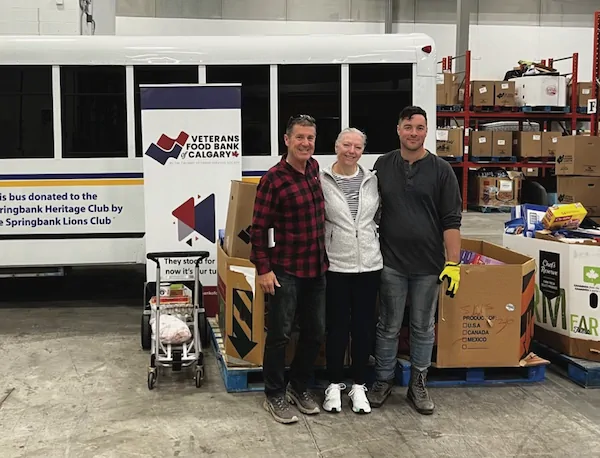Be A Good Swinger
Ok, I couldn’t resist with this title and perhaps I got your attention a bit quicker? For you golfers out there – Hooray! Golf is a great COVID-19 sport! It was a little hit or miss there for a few weeks, but luckily with a few safety measures in place, we were allowed to get out in the fresh air and start swinging! If you were not a golfer in the past, perhaps you have sought out a new sport in order to get out and enjoy an activity this summer. I know bike sales are off the charts this year – which is another silver lining in this “new world” – everyone is getting out, getting active and maybe trying something new.
Golf may be considered a laid back sport to some, but the high intensity swing and duration of the game must be taken into account. It is important to have a strong core, flexible shoulders and hips in order to have an efficient swing, prevent injuries and enjoy this popular, albeit frustrating, game all summer. Here are a couple of commonly asked questions regarding fitness and the sport of golf.
What muscle groups do people use when playing golf ?
The golf swing incorporates almost every muscle and joint in the body! If we break the golf swing down, there are some key muscle groups that are important to consider when stretching and training for the sport of golf. During the backswing: balance, joint mobility and muscle flexibility are paramount. While shoulder, hip, and trunk rotation are necessary to achieve the optimal backswing technique, other muscles provide stability and balance. The transverse abdominus and oblique muscles in the abdomen work to stabilize the spine and coil up the trunk in preparation for the powerful downswing. The hip (quads and hamstrings) and shoulder muscles (abductors and external rotators) on the trail-side are actively working to prepare our bodies for the next phase. The downswing is a powerful and fast motion that requires much coordination and joint awareness. Our hip, thigh and calf muscles help stabilize the knee, rotate the hips and transfer load onto the lead leg. The shoulder and torso muscles generate power and speed for contacting the ball.
Finally, the follow through phase is mainly a deceleration of the body after impact. Many of the same muscles work eccentrically (controlling movement while they are lengthening) to slow down the body, protect joint range of motion, and maintain balance.
What are the most common golf injuries?
In the upper body, shoulder injuries are most common. Typically, these involve the shoulder rotator cuff muscles: the supraspinatus, infraspinatus, teres minor, and subscapularis. These muscles are the core stability of our shoulder joint. More often on the lead shoulder, these muscles can be overtaxed by improper technique, such as excessive shoulder elevation during the back swing. Poor trunk rotation and over swinging can also overuse these muscles and cause injury. Elbow injuries, such as tendonitis issues, can develop due to poor grip technique, frequent repetition, and taking deep divots. Wrist tendonitis, carpal tunnel syndrome, and thumb injuries are mainly due to excessive grip pressure and poor grip mechanics.
In the lower body, knee injuries such as a meniscal tear or ankle tendonitis can occur due to the pivoting motion of the swing, improper weight shifting, and poor footwear.
The majority of injuries we see in golf, involve the back. 50% of injuries occur during the downswing. This action has the greatest speed and force on our muscles and joints. Typically, the lower back, elbows and knees are affected during this phase. The most damaging position for our lumbar discs is at the moment of impact when our spine side flexes and rotates. It is typically the trail-side that endures the most wear and tear, thus increasing the chance of degenerative changes.
How to avoid them?
Since poor technique is a common theme with injuries, a lesson from a PGA teaching professional would be helpful. Maintaining adequate flexibility in the shoulders, trunk and hips allow the stabilizing muscles to perform more efficiently. Incorporate stretches that target back extension, trunk rotation, hamstring, hip flexors, and outer hips. Stretches that target shoulders, forearms and neck are preventative as well.
Strengthening the shoulder rotators, trunk muscles, and the hip muscles would greatly enhance joint stability, technique and coordination. Performing strengthening exercises such as shoulder external rotation, upright row, and hip abduction will utilize these muscles.
Research shows that the limiting factor to how powerful the spine can move, is the strength and function of the deep stabilizing trunk muscles – the transverse abdominus, internal obliques and multifidus muscles. By activating these muscles throughout the golf swing, the trunk will have more power and spinal protection. A good start would be to simply draw in your lower abdomen towards your spine while addressing the ball and throughout your swing. Exercises such as oblique curl ups, front and side planks are great spinal stability exercises for core strengthening. Golf specific exercises are optimal for injury prevention and preparing your body for the powerful and dynamic nature of the golf swing.
I am a certified Level 2 practitioner with the FITforeGOLF seminars. This program for physiotherapists uses “clinically based golf rehabilitation and injury prevention strategies incorporating the latest biomechanical and sport medicine research”. I enjoy educating patients on their golf related injuries, focusing on injury prevention and developing an exercise program to strengthen, stabilize and improve flexibility to get you back on the links as soon as possible. It is such a short season after all!
If your season is cut even shorter with a current injury or you would like to prevent future injuries, the physiotherapists and massage therapist at Bragg Creek Physiotherapy would love to help you out.
Jennifer Gordon
(BSc. PT, AFCI, GIMS Physiotherapist, Certified Level Ⅰ/Ⅱ ‘Fit Fore Golf’ Practitioner)
Bragg Creek Physiotherapy
www.braggcreekphysio.com


























